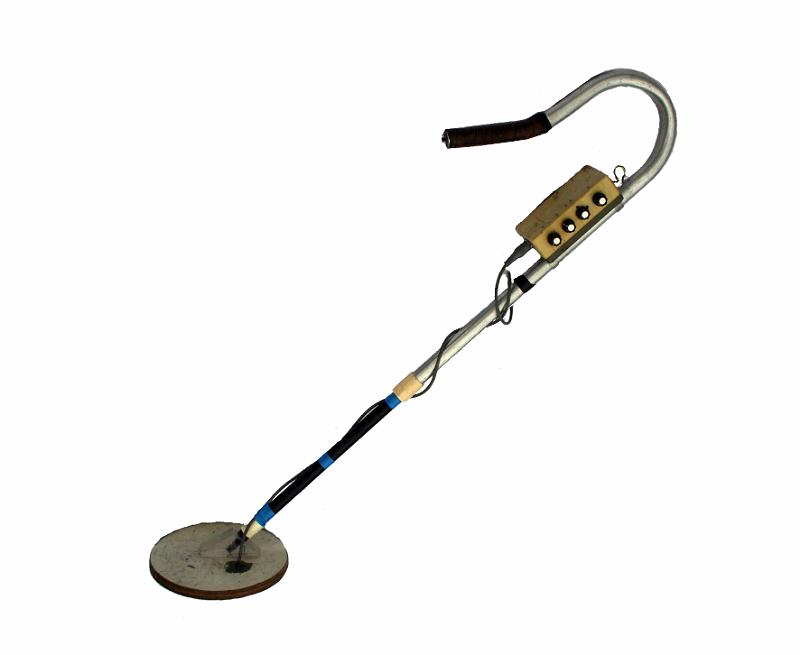Madame Caillavah and Her Nineteenth-Century Gold Detector March 26, 2014
Author: Beach Combing | in : Modern , trackbackIn that unholy mess of blood and tradition-killing, the French Revolution, there was much sacking of national treasure houses and attempts by ‘reactionaries’ and guardians to keep some of those treasures out of the hands of the Convention. One such event took place in 1793 at St Denis when looters went over the entire Cathedral and the royal tombs, carrying away anything of value. However, a rumour persisted and persists that before the sans-culottes got to work a goodly portion of those same treasures was hidden somewhere in the grounds of the cathedral. If this is true, then, a remarkable hoard awaits discovery: if it is false it is still a good story and has inspired much nuttiness and passion over the years. At one point, in late 1882, the French government and business backers were even, somehow, persuaded into bringing a dowsing rod onto the premises.
The Director of Fine Arts has incurred no little ridicule by allowing the divining rod to be used at St Denis for the purpose of discovering the Cathedral funds said to have been secreted in 1793. A Madame Caillavah, ot Montmarte, pretends to the act thus unmasking concealed treasure, and has found ten shopkeepers credulous enough to advance 100 francs each, a fifth of which has been deposited as caution money, while the rest is to be devoted to paying the diggers. A kind of convention has been concluded between the sorceror and the Government, the latter stipulating for all jewels and manuscripts and for two-thirds of the cash. Madame Caillavah, armed with a rod basing a small tube containing some secret composition, bequeathed her by a wizard, directs the operations. It is needless to say that nothing has yet been found. Indeed, there are people who doubt whether a treasure was ever buried in the cathedral and who believe that if it was it did not long remain there… It is significant, however, that the old lady, despite her pretended powers, is in indigent circumstances, and it seems that thirty years ago she contributed the expense of similar but fruitless explorations in the ruined Abbey of Argentouil. Her sincerity appears unquestionable, and she asserts that the divining rod acts only when held by person who has ‘the fluid.’ She is now awaiting permission to dig in proximity to the tomb the Prince de Conde, who died in 1830.
This British report is slightly unfair (or overly charitable?) to MC. Her divining rod had nothing magic about it, she claimed. Rather, according to one American account, ‘[Her] rod was a tube stuffed with some chemical compound, which was as sensitive to the presence of gold and silver as the most powerful magnet to that of steel.’ Note though that it had to be in the hands of the right person!
Various reports describe the progress in the crypt and even the discovery of a hidden cavity and then suddenly all the reports (at least in the English-speaking press) end… Any more information? drbeachcombing AT yahoo DOT com
26 March 2014: Michael Robinson writes in: There is a great deal more in a very detailed report in the New York Times, Paris October 9th., published October 29th. 1882. The divining rod is stated to have been “invented by deceased commercial traveler who gave her the rod on his death bed and apparently was not worked by Mme. Cailavah herself but by a ‘young and vigorous-handed individual. The persons responsible for her permissions M. Morel, Chief of the Bureau of Fine Arts, and M. Darcy, the cathedral architect – she had succeeded in finding a bag of gold hidden in Darcy’s study. The expedition and entire exploration appears to have been quite extensive and took place over the continual and personal objection of the archbishop. Apparently when news of her explorations appeared in the newspapers the relevant Minister said nothing had been done with his permissions and prevented the ‘experiment’ from continuing.. The author of the article them goes on to describe a meeting with Mme. Cailavah and a detailed description of the rod. A link to the full text is here: (Full text of article available in aPDF). Also the various London Times accounts, which differ in assorted details from those of the NY Times, are quoted at the end of chapter 14, ‘The Wizardry of the Divining Rod,’ in Ralph D. Paine ‘The Book of Buried Treasure Being a True History of the Gold, Jewels, and Plate of Pirates, Galleons, etc., which are sought for to this day’ (London: Heinemann) 1911 Thanks Michael!



